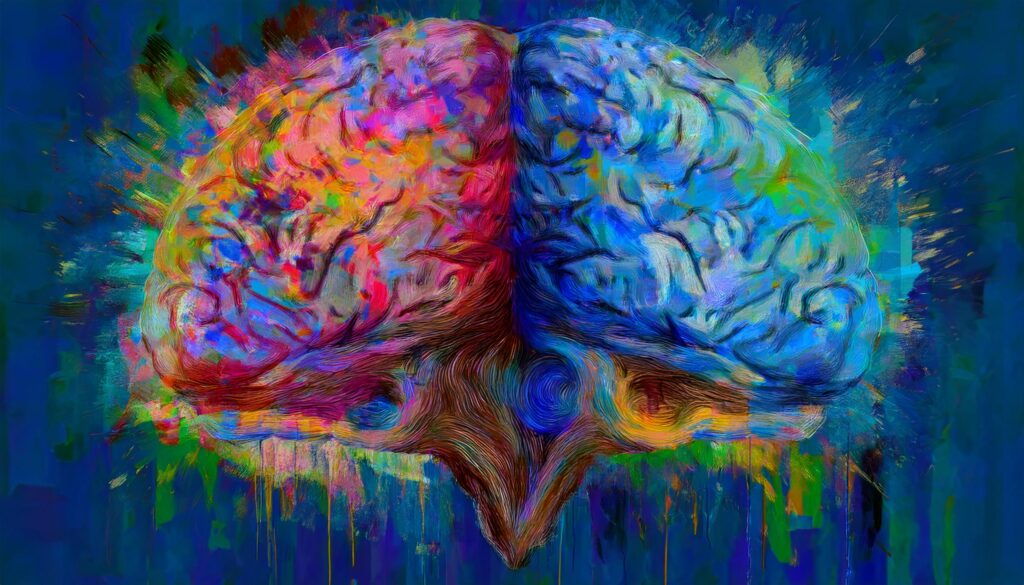In our previous exploration of binary thinking, we examined its allure and prevalence in our daily lives. Now, we turn our attention to the profound impact this cognitive approach has on our perceptions, relationships, and decision-making processes. While binary thinking can offer clarity in certain situations, its limitations often lead to oversimplification and misunderstanding in our complex world.
The Lens of Black and White: How Binary Thinking Shapes Our Perceptions
Our perceptions of the world around us are significantly influenced by the cognitive frameworks we employ. Binary thinking acts as a powerful lens, often distorting our view of reality by forcing complex situations into oversimplified categories. In personal relationships, this distortion can lead to hasty judgments and misinterpretations, potentially causing long-term damage to our connections with others.
Consider a scenario where one partner in a relationship appears increasingly distant and unengaged. Binary thinking might lead the other partner to quickly categorize this behavior as a sign of falling out of love or losing interest in the relationship. They might think, “Either he loves me and wants to be with me, or he doesn’t care anymore.” This black-and-white interpretation overlooks the nuanced reality of human experience.
In truth, the seemingly distant partner might be grappling with overwhelming work responsibilities, caring for an ailing parent, or silently battling with their own mental health challenges. These long-term obligations could be severely taxing their mental and physical capacities, leaving them emotionally drained and unable to engage in the relationship as they once did. Their apparent unavailability isn’t a simple matter of choice or a reflection of their feelings for their partner, but rather a complex interplay of external pressures and internal struggles.
By jumping to a binary conclusion, the observing partner misses the opportunity to approach the situation with empathy and understanding. They might react with anger or withdrawal, further exacerbating the problem, instead of offering support and seeking to understand the underlying issues. This binary interpretation can lead to a breakdown in communication, eroding the foundation of trust and mutual support that relationships require to thrive.
This example illustrates how binary thinking can oversimplify the rich, multifaceted nature of human behavior and relationships. It underscores the importance of approaching interpersonal dynamics with an open mind, ready to explore the shades of gray that exist between the extremes of black and white thinking.
Professionally, binary thinking can shape our perceptions of colleagues and workplace dynamics. A team member who disagrees with our ideas might be quickly categorized as oppositional or difficult, rather than viewed as someone offering a different perspective that could potentially improve the project. This black-and-white view can stifle collaboration and innovation, limiting the potential for diverse ideas to flourish.
The impact of binary thinking on self-perception is equally significant. When we view our own abilities and traits in binary terms – smart or dumb, successful or unsuccessful – we create artificial limitations on our potential for growth and development. This rigid self-categorization can lead to a fixed mindset, where we believe our abilities are static and unchangeable, rather than embracing a growth mindset that sees challenges as opportunities for learning and improvement.
The Communication Conundrum: Binary Thinking in Interpersonal Interactions
Binary thinking profoundly affects how we communicate with others, often leading to misunderstandings and conflicts. In both personal and professional contexts, this black-and-white approach can create barriers to effective communication and mutual understanding.
In personal relationships, binary thinking can manifest as absolutist language – “You always do this” or “You never listen to me.” These statements, born from a binary perspective, leave little room for nuance or acknowledgment of exceptions. They can escalate conflicts by putting the other person on the defensive, leading to a cycle of accusation and counter-accusation rather than constructive dialogue.
In the workplace, binary communication can hinder collaboration and problem-solving. When complex issues are reduced to simple either/or propositions, it becomes difficult to explore creative solutions or find middle ground. For example, viewing a project as either a complete success or a total failure ignores the valuable lessons and partial achievements that often come from complex endeavors.
The polarization that results from binary thinking in communication can be particularly damaging in team settings. When individuals or groups are labeled as entirely right or wrong, it creates an adversarial environment that discourages open dialogue and mutual understanding. This us-versus-them mentality can erode team cohesion and limit the potential for collaborative problem-solving.

The Bias Reinforcement Cycle: Binary Thinking and Cognitive Biases
Binary thinking doesn’t operate in isolation; it often interacts with and reinforces other cognitive biases, creating a cycle that can significantly distort our perception of reality.
Confirmation bias, our tendency to seek out information that confirms our existing beliefs, is particularly susceptible to reinforcement by binary thinking. When we view the world in black and white terms, we’re more likely to notice and remember information that fits neatly into our established categories, while overlooking or dismissing contradictory evidence. This creates a self-reinforcing cycle where our binary views become increasingly entrenched.
The availability heuristic, which leads us to overestimate the likelihood of events based on how easily they come to mind, can also be amplified by binary thinking. Recent or emotionally charged experiences can be given disproportionate weight in our decision-making, leading to skewed judgments. For instance, after hearing about a plane crash, we might categorize air travel as dangerous, despite statistical evidence of its safety.
Binary thinking can exacerbate the fundamental attribution error, our tendency to attribute others’ behaviors to their personality while attributing our own to external circumstances. This bias, when combined with a black-and-white perspective, can lead to overly harsh judgments of others and a lack of empathy in both personal and professional relationships.
The Oversimplification Trap: Limitations in a Complex World
Perhaps the most significant limitation of binary thinking is its tendency to oversimplify complex issues, leading to incomplete understanding and potentially flawed decision-making.
In personal relationships, this oversimplification can manifest as a failure to recognize the complexity of human emotions and motivations. Viewing a partner’s actions as either loving or unloving, for example, ignores the intricate interplay of emotions, past experiences, and external factors that influence behavior. This simplistic view can lead to misunderstandings and missed opportunities for deeper connection and empathy.
In professional settings, binary thinking can lead to missed opportunities and poor strategic decisions. When complex market trends or organizational challenges are reduced to simple either/or propositions, leaders may overlook innovative solutions or fail to adapt to nuanced changes in their industry. The business world is rarely black and white; success often lies in navigating the gray areas and embracing complexity.
The tendency to neglect middle ground and compromise is another significant limitation of binary thinking. In negotiations or conflict resolution, a binary approach can lead to deadlock, with each side stubbornly adhering to their position. Recognizing the spectrum between opposing viewpoints opens up possibilities for mutually beneficial solutions and creative problem-solving.
The Ripple Effect: Consequences of Persistent Binary Thinking
The impact of persistent binary thinking extends far beyond individual decisions or interactions. Its effects can ripple through our personal lives, professional careers, and overall well-being.
In personal relationships, the consequences of binary thinking can be profound and long-lasting. Trust issues and emotional distance often result from consistently viewing situations in black and white terms. When partners feel they’re constantly being judged or categorized, it creates a barrier to open communication and emotional intimacy. Over time, this can lead to a breakdown in the relationship, with both parties feeling misunderstood and undervalued.
The inability to effectively resolve conflicts is another significant consequence of binary thinking in relationships. When issues are viewed as having only two possible outcomes – win or lose – it becomes challenging to find compromises or creative solutions that address both parties’ needs. This can lead to a pattern of unresolved conflicts, building resentment and eroding the foundation of the relationship.
In professional life, binary thinking can result in missed opportunities and stunted career growth. By categorizing jobs, projects, or colleagues into simplistic good or bad categories, individuals may overlook chances for learning and development. A project that doesn’t align perfectly with one’s interests might be dismissed as worthless, missing the potential for skill development or networking opportunities it could provide.
Decision-making in a professional context can be particularly hampered by binary thinking. When complex business problems are reduced to simple either/or choices, leaders may overlook innovative solutions or fail to consider important nuances. This can lead to poor strategic decisions, missed market opportunities, and a failure to adapt to changing business landscapes.
Team collaboration often suffers under the influence of binary thinking. When team members are quickly labeled as either competent or incompetent, valuable or dispensable, it creates an environment of judgment rather than support. This can stifle creativity, reduce willingness to take risks or share ideas, and ultimately limit the team’s potential for innovation and problem-solving.
The mental health implications of persistent binary thinking are also significant. The constant pressure to categorize experiences, people, and oneself into rigid categories can lead to increased stress and anxiety. The world rarely fits neatly into black and white categories, and the cognitive dissonance created by trying to force it to do so can be mentally and emotionally exhausting.
Self-esteem and confidence can be negatively impacted by binary thinking. When we view our abilities, achievements, or worth in all-or-nothing terms, we set ourselves up for disappointment and self-doubt. A single failure might be seen as evidence of complete incompetence, while the nuanced reality of learning and growth is overlooked.
Conclusion: The Nuanced Path Forward
As we’ve explored, the impacts and limitations of binary thinking are far-reaching, affecting our perceptions, relationships, and decision-making in both personal and professional spheres. While binary thinking can offer clarity and simplicity in certain situations, its persistent application in our complex world often leads to misunderstandings, missed opportunities, and unnecessary conflicts.
Recognizing these limitations is the first step towards developing a more nuanced approach to thinking and decision-making. By acknowledging the shades of gray that exist in most situations, we open ourselves up to a richer, more accurate understanding of the world around us.
In my final article, I will explore strategies for overcoming binary thinking, offering practical techniques for developing more nuanced perspectives in both personal and professional contexts. I will examine how embracing complexity can lead to improved problem-solving, stronger relationships, and more effective leadership.

